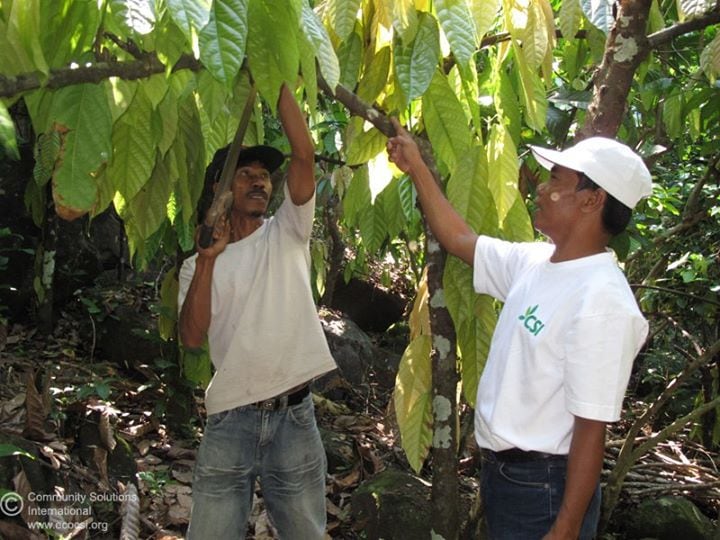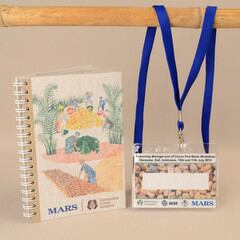Cocoa Paper, a subsidiary of Community Solutions International, has manufactured stationery such as notepads, greeting cards and business cards from Indonesian cocoa tree bark for the cocoa and chocolate industry since it setup in collaboration with Mars in 2009.
Speaking to ConfectioneryNews, Kate Janetski, managing director of Community Solutions International, said: “The chocolate industry had a look at our work and thought that it made sense for cocoa sustainability.”
We asked how a notepad made from cocoa tree bark could help farmers let alone improve the cocoa bean supply.
Pruning trees improves yields and reduces disease risk
Cocoa Paper pays US $0.15 per kilo for waste cocoa tree bark. Janetski said that in order for farmers to obtain the waste bark their trees need to be pruned, a process that reduces disease risk and encourages pod growth.
“The largest killer of cocoa in Sulawesi [tree diseases] can be eradicated by pruning,”
“One of the most important activities a farmer can do is prune their trees and a lot of them do not.”

She added that pruning allowed additional light, encouraging more flowers to grow that will eventually yield pods.
“Unless we all do something we won’t have cocoa anymore. If you don’t have the cocoa farmer you don’t have chocolate.”
Community Solutions International also runs a business called Cocoa Care, which encourages practices like pruning by inviting farmers to model farms to show them the benefits.

Additional income for farmers
It is usually the wives of farmers who collect the wasted bark from pruning to earn extra income for their families.
A typical family may collect 100 kilos of bark per month, for which they would be paid $15. Janetski said the price was higher than the premium farmers received for fermented cocoa beans.
Cocoa Paper is currently working with around 60 families across Indonesia. “It’s going to help them stay in cocoa farming,” said Janetski.
Cocoa is increasingly coming under threat from other less volatile crops, particularly corn and palm oil in Indonesia.
Marketing tool for confectioners
97% of Cocoa Paper products are exported over the world and the confectionery industry is among Cocoa Paper’s chief customers.
“It’s a marketing tool for them as well,” said Janetski. Many chocolate manufacturers print a story on the stationery to communicate that the product is helping cocoa farmers.
The finished paper supports graphics and logos and is no more expensive than standard paper.
Cocoa Paper has a collection site for cocoa tree bark in Sulawesi and manufactures the stationery in Bali.
The paper formation is mainly done by hand, giving a more consistent and durable product than machine-formed paper, said Janetski.
